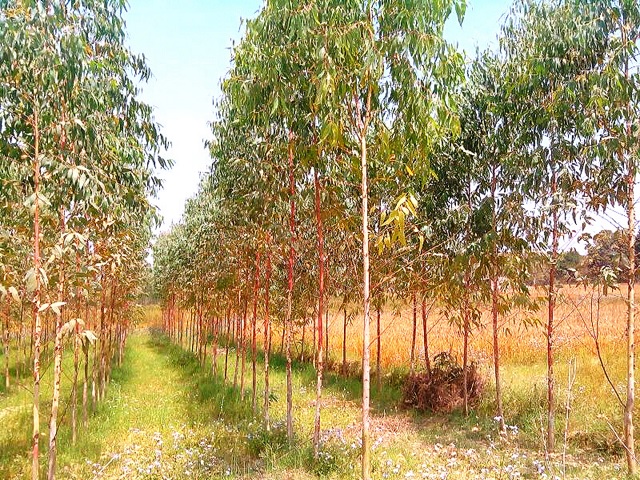
This comes as Uganda joins the rest of the world to commemorate the World Forest Day on March 21 to raise awareness of the importance of all types of forests
Kampala, Uganda | Isaac Khisa | Ugandan scientists have developed drought tolerant tree species, paving way for possible establishment of commercial forests in the drought hit Karamoja sub-region.
Emmanuel Ikilai, the soil fertility technician at the Nabuin Zonal Agricultural Research and Development Institute located in Nabilatuk district, Karamoja sub-region, said out of the seven tree species that were planted in April 2019, preliminary results shows that three tree species have high levels of tolerant to drought.
“Clonal eucalyptus, Melia Uganda and G. arborea tree species have shown that they can grow well in Karamoja and therefore one is able to establish a commercial forest plantation,” he said.
Ikilai said Clonal eucalyptus is growing very well and faster and so is the Melia Uganda though its trunk is not very big.
He said G.arborea has also shown high drought tolerance and is able to withstand fires in the event that fire descends on the garden as it is a norm during the dry season.
“In fact, this tree species sprout very fast and continues to grow,” he said.
He, however, said Melia Kenya is not recommended for the farmers owed to the fact that although it grows well, it is highly susceptible to diseases. Other tree species still undergoing research at the Institute include; G. robusta, T. brownii, and GC 796.
The study is co-sponsored by the National Agricultural Research Organisation, Food and Agriculture Organization of the United Nations, European Union and the National Forestry Resources Research Institute.
This comes as studies show that average monthly temperatures in the Karamoja region are increasing, affecting livestock forage quality and leading to negative livestock productivity. In addition, there’s a change in rainfall patterns in the region, meaning that farmers are less able to depend on historic weather patterns when determining when to plant and harvest crops.
This also coincides with Uganda joining the rest of the world to commemorate the World Forest Day on March 21 aimed at raising awareness of the importance of all types of forests to humanity and the environment.
Dr. Paul Okullo, director at the Nabuin Zonal Agricultural Research and Development Institute said the government now needs to popularize growing of commercial trees in the Karamoja region.
“Most of the poles used in building here come from Mbale or Soroti at Shs10,000 per pole. Now calculate that in terms of a single acre. That means that some of these people who believe in cattle rustling will no longer do it because there won’t be time for such,” he said.
Similarly, available statistics show that Uganda’s imports of wood and wood products have been on the increase over the few past years.
For instance, the value of wood and wood products imports in Uganda surged from US$113million in 2015 to US$149million in 2019, according to the data from Bank of Uganda.
However, in 2020, the value of imports of wood and wood products dropped to US$101million as coronavirus pandemic hampered imports.

 The Independent Uganda: You get the Truth we Pay the Price
The Independent Uganda: You get the Truth we Pay the Price



